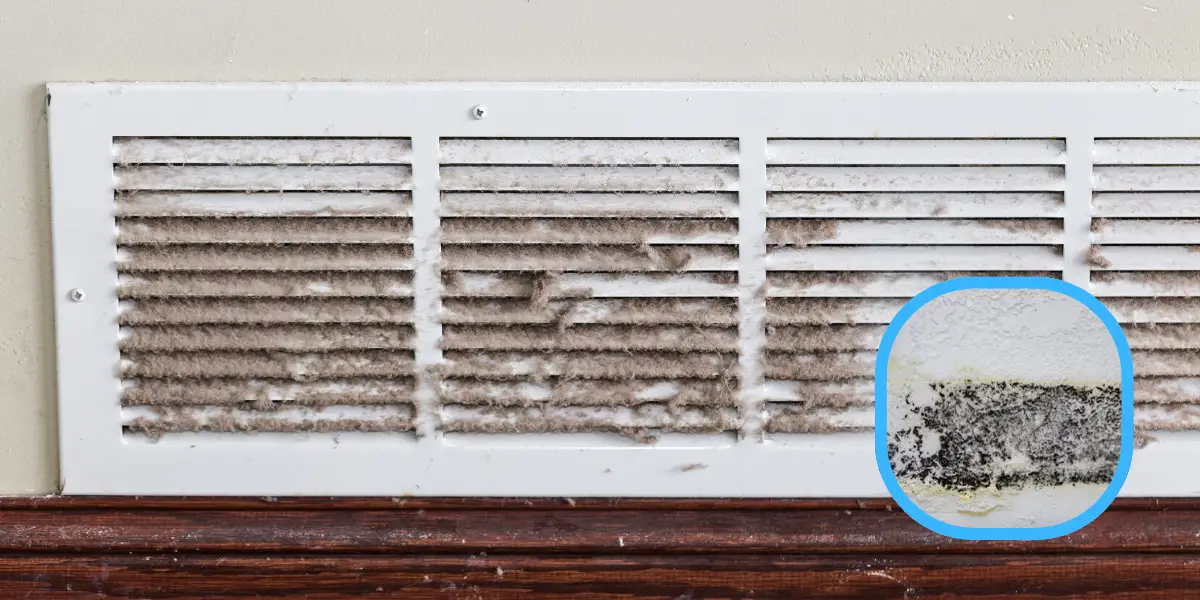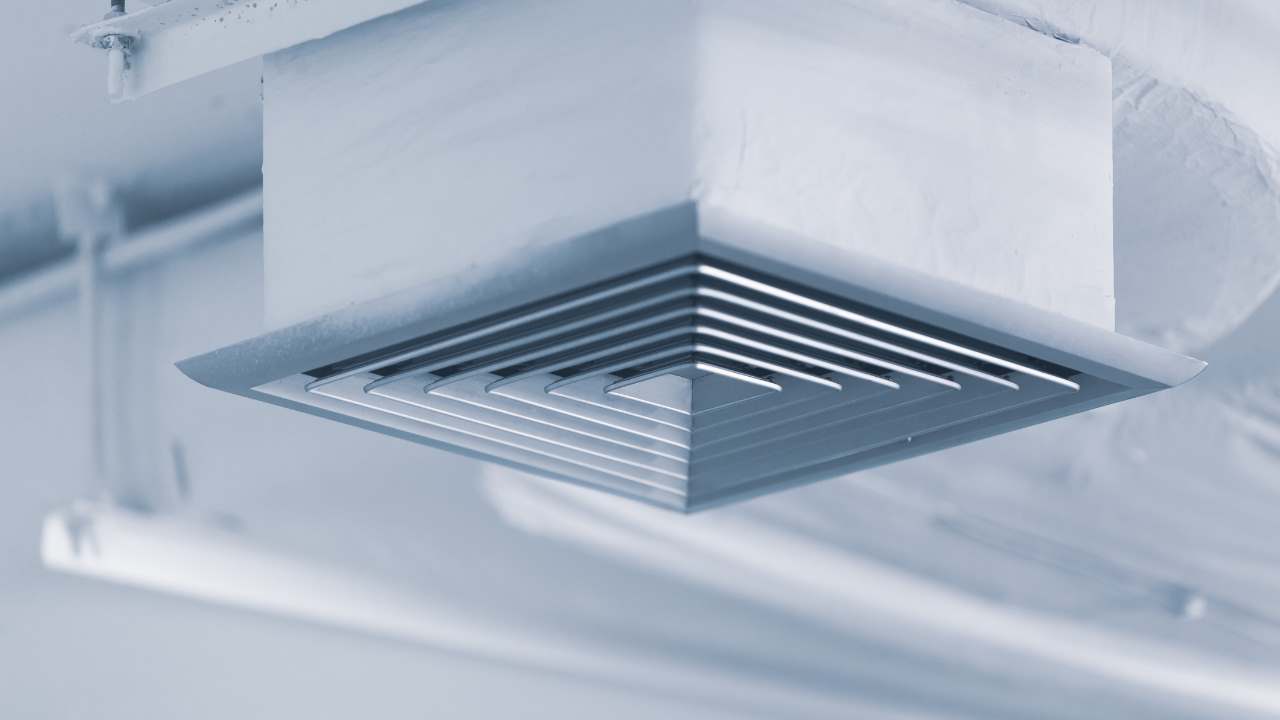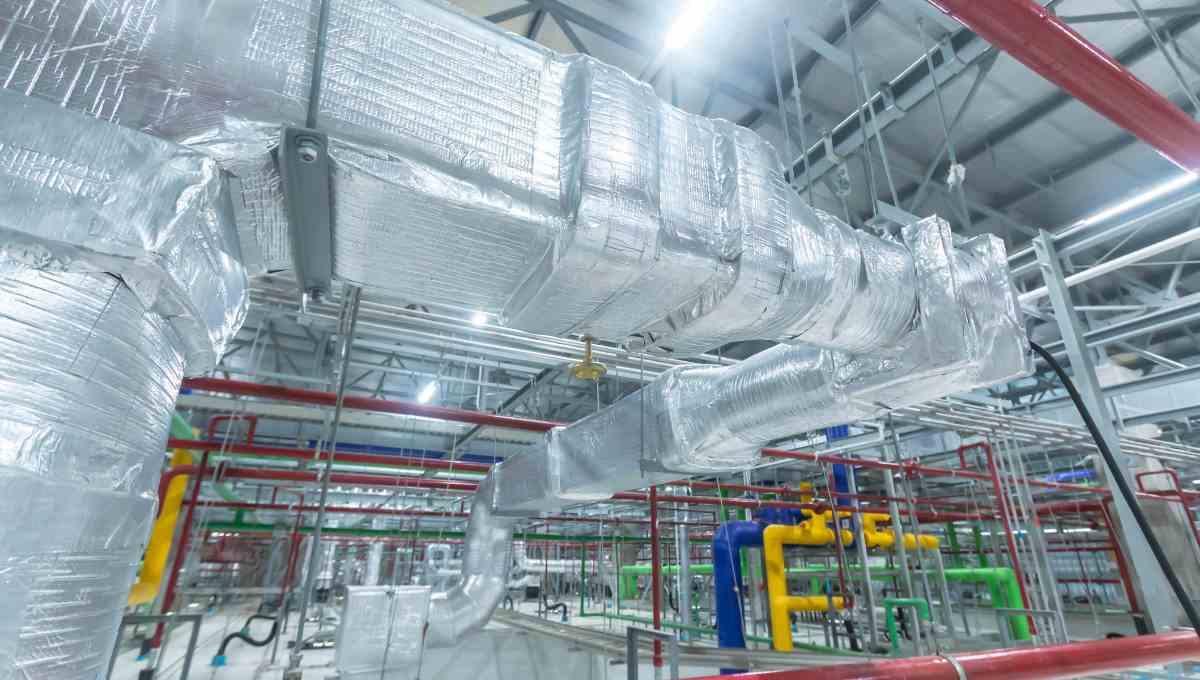Do you suspect that musty odor and persistent cough hint at something more than just dust? This should be mold, silently impacting your air quality and health. But don’t worry! Understanding the types of mold in air ducts helps you to take action and breathe easily again.
This blog will discuss the most common types of mold in air ducts, their causes and symptoms, and effective ways to get rid of them. So, let’s get started!
What causes mold in air ducts?
While air ducts are meant to deliver clean air, sometimes they become breeding grounds for unwanted guests– mold spores. But what exactly turns your air ducts into a mold breeding ground? Let’s have a look–
- Moisture
Air ducts can become a breeding ground for mold when moisture levels are high. This moisture may result from leaks in the ductwork, condensation due to temperature variations, or excessive humidity in the indoor environment.
- Lack of ventilation
Poor ventilation within the duct system can trap moisture and promote stagnant air, creating an ideal environment for mold growth. Improper airflow may also prevent the drying out of damp areas, exacerbating the problem.
- Presence of organic matter
Dust, debris, and other organic particles that accumulate within air ducts provide a nutrient-rich substrate for mold spores to thrive. When combined with moisture, these organic materials create a conducive environment for mold growth.
- Darkness and stagnation
Your air ducts are dark and often lack proper airflow, creating the perfect environment for mold to flourish undisturbed. This lack of ventilation further traps moisture and prevents the growth from drying out.
- Improper Maintenance
Regular cleaning and maintenance of your HVAC system are crucial. Neglecting these tasks allows dust and moisture to build up, creating the ideal conditions for mold to take hold.
Types of mold in air ducts
While the presence of any mold in your air ducts is unwelcome, it’s helpful to understand the different types you might encounter. Each type has its own characteristics and potential health risks, and knowing them can guide the best course of action.

- Acremonium
Acremonium in air ducts, this white, powdery mold thrives in damp areas and often colonizes air ducts. While not considered highly toxic, it can trigger allergic reactions and respiratory issues.
- Alternaria
This green or brown, velvety mold is another common resident in air ducts. It prefers damp environments and can cause allergic and respiratory problems similar to Acremonium.
- Aspergillus
This diverse mold comes in various colors, including green, black, and white. While some species are harmless, others can be allergenic or even cause severe infections in individuals with weakened immune systems.
- Chaetomium
This cotton-like brown mold often hides in walls but can migrate to air ducts. It can irritate the skin and respiratory system.
- Stachybotrys
Also known as black mold. Though not the most common, this notorious black mold is highly toxic and can cause severe respiratory problems, skin irritation, and other health issues.
- Fusarium
Starting in air ducts, this mold can spread to walls and cause allergic reactions and respiratory problems.
- Mucor
This black mold is highly toxic and requires immediate professional attention. It can cause severe respiratory infections and other health complications.
- Ulocladium
The brown, grey, or black mold is known for its wool-like texture and can cause severe respiratory problems and weaken the immune system.
- Eurotium
This green or brown mold can cause allergic reactions and respiratory problems, especially in people with weakened immune systems.
- Trichoderma
This green mold can be beneficial in some contexts, but it can trigger allergies and respiratory problems in air ducts. It thrives in damp areas and on organic matter.
Symptoms of Mold in Your Air Ducts
Mold in air ducts is like a hidden enemy, silently compromising your health and comfort. But don’t worry, here are some common mold in air ducts symptoms–
- Musty odor
This is the most common symptom, often described as a damp, earthy, or mildew-like smell. The odor intensifies when the HVAC system runs, pushing mold spores into the air you breathe.
- Visible Mold Growth
While less common, mold sometimes becomes visible in air vents, grilles, or surrounding surfaces. If you see any black, green, brown, or white growths, don’t touch them and seek professional help immediately.
- Respiratory Issues
Coughing, sneezing, wheezing, and difficulty breathing can be triggered by mold exposure. These symptoms are especially concerning for individuals with allergies or asthma.
- Skin Irritation
Mold spores can irritate the skin, causing itching, redness, and rashes. This is particularly noticeable in areas with high exposure to air ducts, like around vents.
- Fatigue and Headaches
Chronic fatigue, headaches, and even brain fog can be linked to mold exposure, impacting your overall well-being.
- Worsening Allergies and Asthma
If you notice an increase in allergy or asthma symptoms, especially during certain seasons, it could be due to mold growth in your air ducts.
Can mold in air vent make you sick?
While not everyone reacts the same, mold in air vents can make you sick. Mold spores released into the air can cause respiratory issues like coughing and wheezing, trigger allergic reactions such as sneezing and watery eyes, weaken the immune system, and even lead to neurological symptoms like headaches and fatigue.
That’s why it’s essential to promptly address mold in air vents to prevent health problems and maintain a safe indoor environment.
How to get rid of mold in air ducts?
Discovering mold in your air ducts can be alarming, but remember, you’re not alone. Effective solutions exist to eliminate this unwelcome guest and restore your home’s air quality.
- Identify the Source
Conduct a thorough inspection of the ductwork to locate the source of mold growth. Check for leaks, moisture buildup, and areas of organic debris that may promote mold growth.
- Safety Precautions
Wear protective equipment like gloves and a mask before starting the removal process.
- Remove Mold
Clean the duct surfaces thoroughly using a HEPA vacuum and scrub with a mold cleaner solution to remove mold growth.
- Dry and Disinfect
Ensure the ducts are completely dry to prevent mold regrowth, then disinfect with a biocide to kill any remaining spores.
- Consider Professional Help
For extensive mold contamination or if unsure about DIY remediation, seek assistance from certified professionals.
Conclusion
Mold lurking in air ducts can pose health risks, but with the right knowledge and action, you can breathe easily again. Remember, types of mold in air ducts vary, and DIY attempts can be risky.
Don’t let mold steal your breath of fresh air! Contact Stream Express today for a free consultation and breathe easy again.
FAQ
Does air duct cleaning remove mold?
Yes, air duct cleaning can remove mold. Professional cleaning services use specialized equipment and techniques to effectively eliminate mold growth from air ducts, improving indoor air quality.
What does mold in air ducts look like?
Depending on the species and environmental conditions, mold in air ducts can appear as black, green, white, or brown spots or patches.
What kills mold in air ducts?
Mold in air ducts can be effectively killed and removed using professional mold remediation methods such as thorough cleaning, disinfection with biocides, and improving ventilation to prevent moisture buildup
How do you test for mold in air ducts?
Professionals use visual inspection, air sampling, and surface testing to identify the presence and type of mold. They then recommend the appropriate remediation plan.



